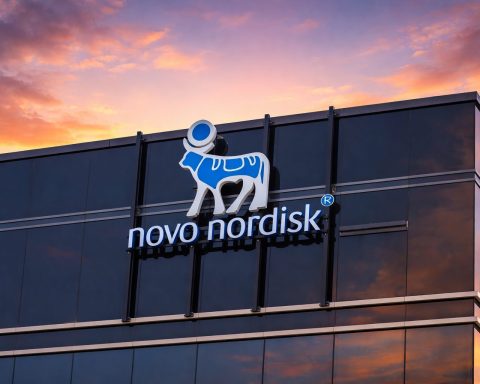- Soaring Stock, Volatile Swings: Opendoor Technologies (NASDAQ: OPEN) saw its stock skyrocket over 1,600% from penny-stock levels this summer, peaking above $10 amid a meme-stock frenzy, before cooling to the mid-$7 range by late October [1]. As of October 22, shares traded around $6.82 after a recent pullback [2] – still up 300%+ year-to-date and far outpacing the broader market.
- New Leadership & Cost Cuts: In September, former Shopify executive Kaz Nejatian took over as CEO (with co-founder Keith Rabois stepping in as Chairman) to spearhead a turnaround [3]. The new leadership is slashing expenses – Rabois even floated cutting ~85% of Opendoor’s 1,400 employees – aiming to create a leaner, “AI-first, agent-led” real estate platform [4] [5].
- Crypto Buzz Boost: Earlier this month, Opendoor confirmed plans to accept Bitcoin and cryptocurrency for home purchases, igniting investor excitement. CEO Nejatian’s tweet that crypto home-buying “will” happen sent OPEN shares jumping +14% in one day [6], as the company signaled a bold fintech play to attract tech-savvy buyers.
- Mixed Financial Signals: Opendoor posted its first adjusted profit since 2022 in Q2 2025 (positive EBITDA on $1.6 billion revenue) [7]. But rising mortgage rates are hitting sales – management warned Q3 revenue would drop by half to around $0.8–0.87 billion, sliding back into losses [8]. Wall Street indeed expects a ~36% YoY revenue plunge for Q3 [9], with results due Nov. 6.
- Real Estate Trends Key:High interest rates have cooled the housing market, leaving a record surplus of sellers over buyers (about 500,000 more nationwide, per Redfin) [10]. This backdrop squeezed Opendoor’s home-flipping model in 2022–2023. Now there are glimmers of a rebound – mortgage rates have eased slightly and new home sales spiked +20% in August [11] – and the Fed’s recent rate cuts could slowly revive buyer demand into 2026 [12]. Any sustained housing uptick will be crucial to improving Opendoor’s thin margins [13].
- Experts Split on Outlook: An army of Reddit retail traders (the “$OPEN Army”) drove Opendoor’s rally, but many analysts remain skeptical. The average 12-month target price is only ~$1–2 [14], with even the most optimistic broker at just $6 – far below current levels. One hedge fund manager bluntly blasted OPEN as “total garbage” with a broken model [15]. Others, however, see a daring growth story: Opendoor’s ~43% revenue CAGR and cheap ~1× price-to-sales could spell upside if lower rates reignite homebuying [16]. Bulls argue the company’s tech and scale as the last big iBuyer (after Zillow and Redfin’s exit from home-flipping [17]) give it a second chance to thrive in a recovery.
From Penny Stock to Meme Superstar: The 2025 Stock Surge
Opendoor’s stock chart in 2025 has been nothing short of astounding. After starting the year under $1 per share, OPEN exploded into one of the year’s top gainers by early autumn [18]. A speculative frenzy over the summer sent shares from about $0.50 in June to over $10 by mid-September (+1,600%) [19] – a rally reminiscent of GameStop’s heyday. This meteoric rise briefly gave Opendoor a mid-cap valuation near $6 billion [20] and turned it into a social-media phenomenon. At one point, Yahoo Finance noted the stock was up +369% year-to-date, crushing the S&P 500’s ~14% gain [21].
However, the ride has been extremely volatile. After peaking above $10, the stock pulled back roughly 15–25% into October [22]. By October 20, OPEN hovered in the mid-$7s – well off its highs but still hundreds of percent above its January price [23]. In recent days it has dipped further, closing around $6.82 on Oct. 22 after a 2% one-day drop [24]. In fact, shares have slid about 20% over the past two weeks amid fading meme momentum [25]. Such dizzying swings have become the norm: Opendoor rocketed +79% in one day (Sept. 11) on news of its new CEO and founders’ return, then plunged ~20% over two sessions late that month when traders rotated to the next hot ticker [26].
The extreme volatility reflects heavy retail speculation (daily volumes in the hundreds of millions of shares) and high short interest (~20–26% of float) that primes the stock for squeezes [27]. Opendoor now sports a 52-week range from about $0.51 to $10.87 [28], underscoring its roller-coaster year. For existing investors, it’s been a white-knuckle experience; for prospective investors, the stock’s huge moves highlight both the potential for outsized gains and the risk of brutal reversals.
New CEO at the Helm and Aggressive Turnaround Plans
Behind Opendoor’s wild stock action are major changes within the company. In mid-September, the firm announced a leadership shake-up aimed at reviving its fortunes. Kaz Nejatian, formerly a top executive at Shopify, was appointed as the new CEO, while Opendoor’s co-founder Keith Rabois returned as Board Chairman [29]. This infusion of experienced leadership immediately electrified investors – literally overnight, optimism about a fresh strategic direction sent the stock soaring (that Sept. 11 spike).
Nejatian and Rabois wasted no time outlining a dramatic turnaround plan. Their vision: make Opendoor an “AI-first, agent-led” real estate platform [30]. In practice, this means doubling down on technology (such as algorithmic pricing, machine-learning tools, and possibly new AI-powered services) while also embracing real estate agents rather than displacing them. Notably, Opendoor has begun deepening partnerships with local agents – essentially opening its platform to outside Realtors and sharing commissions – to expand reach and move homes more efficiently. This is a strategic pivot from the company’s original disruptor stance, and it aims to create a more capital-light, marketplace-style model rather than Opendoor carrying all the housing inventory risk. A recent Zacks analysis highlighted that these agent partnerships could help drive higher-margin growth and broader seller reach if successful [31].
On the cost side, the new regime is taking a hard line. Opendoor’s expenses had ballooned during its rapid growth, contributing to steep losses when the housing cycle turned. Chairman Rabois has been blunt about trimming fat – quipping that the company’s headcount of ~1,400 could be slashed by up to 85% (down to “200 or so” core employees) to streamline operations [32]. “I don’t know what most of them do,” Rabois said of the staff, underscoring his intent to run a leaner operation focused on tech and efficiency [33]. Such drastic layoffs, while alarming to many, would dramatically lower Opendoor’s cost base and perhaps buy more time for it to reach profitability. Indeed, multiple rounds of layoffs have already been implemented over the past year, and more may be on the horizon as management eyes any expense that isn’t mission-critical.
This combination of new leadership, an aggressive cost overhaul, and a tech-driven pivot represents a make-or-break moment for Opendoor. It’s essentially trying to reinvent itself on the fly: from a heavy-loss, high-growth startup into a disciplined, innovative real estate platform that can survive a harsh market. Investors initially cheered these moves – seeing the Shopify pedigree of the CEO and the founder’s return as positives – but the real test will be execution. Can a smaller, AI-powered Opendoor still buy and sell enough homes to scale and do so profitably? Nejatian’s challenge is to prove the company can indeed “do more with less” by leveraging technology and new partnerships in a way that turns the business sustainable. The stakes are high, and the market’s patience is not unlimited.
Crypto Payments and New Innovations Aim to Revive Growth
Amid its turnaround efforts, Opendoor has also been rolling out eye-catching product innovations to spark homebuyer interest and differentiate itself in a sluggish market. The most buzzworthy move came in early October when CEO Kaz Nejatian confirmed on social media that Opendoor plans to accept cryptocurrency – like Bitcoin – for home purchases. It started with a user asking on X (formerly Twitter) about buying a house with crypto, to which Nejatian replied: “We will. Just need to prioritize it.” That simple confirmation set off a mini frenzy: the idea that Opendoor would let people purchase homes via digital currencies was novel enough to send the stock up 14% in a day to $9.28 [34] [35].
For Opendoor, this crypto pivot is about more than a one-day pop – it signals a bid to modernize home transactions and appeal to a new demographic of buyers. If implemented, Opendoor would be among the first real estate platforms to directly accept crypto, potentially attracting cryptocurrency-rich millennials or international buyers looking for alternative payment methods. It aligns with management’s tech-first ethos and grabs attention in the fintech space. Of course, many details remain unclear (which cryptocurrencies? how to handle volatility and regulatory aspects?), and no timeline was given. But simply announcing the intention to integrate crypto reflects Opendoor’s willingness to take bold steps outside the traditional real estate playbook [36] [37]. In the long run, if even a niche segment of buyers utilize this option, it could open a new avenue of demand. At minimum, it’s boosted Opendoor’s profile as an innovator during a time when the company needs every edge to sell homes.
Opendoor is also trying creative promotions to overcome buyer hesitancy. This October, the company began piloting a “7-Day Home Test Drive” program in the Dallas area, effectively allowing buyers to move into an Opendoor home and live in it for up to a week with the option to cancel the purchase if they aren’t satisfied [38]. Along with this, Opendoor is offering a 100-day warranty on major appliances and systems in the home [39]. These kinds of perks are almost unheard of in traditional real estate and mimic the “try before you buy” flexibility consumers expect for smaller purchases. By offering what is essentially a return policy on a house, Opendoor is tackling the biggest purchase anxiety head-on. The initiative, set to expand nationally if successful, could help coax fence-sitters to give Opendoor-owned homes a chance, knowing they have an out. It’s also a savvy marketing angle to differentiate Opendoor’s listings from regular resale homes, potentially enabling the company to sell inventory faster in a slow market.
These innovations – from crypto payments to test-drive guarantees – highlight Opendoor’s tech startup DNA. In a difficult housing market, the company is throwing spaghetti at the wall to see what might boost volume. While it’s too early to gauge the impact, they demonstrate Opendoor’s determination to reinvent the homebuying experience and remove friction where possible. If even one of these bets pays off (say, crypto attracting a wave of new buyers or the test-drive model becoming popular), it could provide Opendoor a much-needed sales catalyst. At the very least, such moves generate buzz and keep Opendoor in the conversation as a real estate innovator, which can help sustain investor interest as the company works through its turnaround.
Housing Market Headwinds – and Hope on the Horizon
Opendoor’s fortunes are tightly linked to the broader real estate market, which has been in a challenging phase over the past year. The company’s iBuyer model – purchasing homes, then reselling them – is highly sensitive to housing demand, home price trends, and interest rates. Unfortunately, 2022 and 2023 brought a perfect storm of headwinds: spiking mortgage rates, falling affordability, and a sudden shift from a seller’s market to a buyer’s market. As the Federal Reserve aggressively raised interest rates to tame inflation, mortgage rates climbed to multi-decade highs, putting home ownership out of reach for many buyers. According to Redfin data, there are currently about 500,000 more home sellers than buyers in the U.S., an imbalance never seen before [40]. In practical terms, that means a lot of homes are sitting on the market unsold – and Opendoor has had to hold properties longer and cut prices to move inventory. When buyers “are calling the shots,” as one analyst put it, flipping houses profitably becomes an uphill battle [41].
This dynamic showed up starkly in Opendoor’s results: the company was forced to sell many homes at a loss last year after it had bought them at 2021’s peak prices. Zillow famously imploded its own home-flipping arm in 2021 for this reason, and Redfin followed suit in 2022 – both concluded the iBuying model was too risky when conditions turn south [42]. Opendoor, now the last major iBuyer standing [43], absorbed heavy losses as home prices cooled. Even in 2025, Opendoor has drastically reined in purchases of new homes (buying only 1,757 homes in Q2 2025, a fraction of what it sold) [44] to avoid overextending in a weak market. In short, the housing cooldown forced Opendoor into survival mode.
The big question: Is the housing market at a turning point? There are some early signs that relief is on the way. Mortgage rates may have peaked – after topping out near 8% for 30-year loans, rates have eased a bit as inflation comes under control [45]. In late September, the Fed actually cut interest rates for the first time in 2025, and another rate cut was anticipated by the end of October [46]. Lower rates eventually tend to filter through to cheaper mortgages, which could bring more buyers back into the market over the next year. Additionally, certain housing metrics are perking up: new home sales (usually referring to newly built houses) jumped +20.5% in August compared to earlier in the summer [47] – a significant spike that suggests developers managed to move more inventory, perhaps by offering incentives or as buyers rushed to lock rates before further increases. Some regions are also reporting stabilizing or even rising home prices again after a dip in 2022–23, indicating that housing demand is still there, just delayed.
For Opendoor, a sustained housing rebound would be a godsend. Higher home prices and more buyer traffic would mean Opendoor can sell its homes faster and at better margins, rather than incurring carrying costs and markdowns. Even a moderate uptick in demand could significantly improve Opendoor’s unit economics, given how razor-thin its margins have been. Every 1% change in mortgage rates matters – at lower rates, thousands of additional families can qualify for loans and start home-shopping. Opendoor’s leadership has indicated cautious optimism that the worst may be over. While speaking to investors in August (when she was still CEO), Carrie Wheeler said she didn’t foresee a quick recovery but was positioning the company to weather the slump until conditions improve [48]. Now, with rates potentially coming down and 2025’s traditionally slow winter season approaching, the focus is on 2026’s spring selling season to truly test if housing is bouncing back.
Still, it’s not guaranteed smooth sailing. If inflation flares up again or the economy stumbles, the Fed could stall or reverse rate cuts, keeping borrowing costs high. Also, the current glut of sellers means home prices are not skyrocketing even as sales volumes tick up – buyers remain price-sensitive and choosy. Opendoor will likely face continued pressure to keep its home prices attractive and possibly offer more incentives (like the test drives or closing cost assistance) to win deals. In other words, the company isn’t out of the woods until there’s a clear, sustained trend of buyers regaining leverage in the market.
In summary, the real estate climate is gradually shifting: what was a fierce headwind in 2022 might become a neutral factor or even a tailwind by late 2025 into 2026. Opendoor’s strategy of downsizing and waiting out the storm could pay off if it can hang on until the housing cycle improves. The next few months will be critical to watch indicators like mortgage applications, inventory levels, and price trends. As the only major iBuyer left, Opendoor is effectively a high-beta bet on the housing market itself. If the market recovers robustly, Opendoor stands to benefit outsized; if it stays soft, Opendoor’s path to profitability remains challenging.
Financial Check-Up: Losses Persist, But Runway and Revamp in Place
Opendoor’s financials reflect a company in transition. In the second quarter of 2025, Opendoor delivered a somewhat mixed picture that nonetheless had a notable bright spot: the company eked out a positive adjusted EBITDA for the first time since 2022 [49]. It generated $1.57 billion in revenue (up ~4% year-on-year) and posted a small operating profit on an adjusted basis, thanks largely to cost-cutting and selling through a lot of older inventory at stabilized prices. This suggested that Opendoor can make money – albeit narrowly – in the right conditions. The company also managed to end Q2 with a significant cash buffer (around $789 million in cash on hand) [50], which provides some runway for the ongoing turnaround.
However, the positive news was tempered by very cautious guidance. Opendoor’s management warned that Q3 2025 would see a steep drop in revenues and a return to losses [51]. In fact, Opendoor projected only about $0.8–0.87 billion in revenue for Q3 – roughly half the level of Q2, and down sharply (~30–40%) from the same quarter a year prior [52]. This aligns with Wall Street’s consensus estimate of roughly $882 million for Q3 (-36% YoY) [53]. The plunge is largely because Opendoor purchased far fewer homes in late 2024 and early 2025, so it has less inventory to sell now, and it intentionally pulled back given the weak market. Fewer homes sold means less revenue, even if each sale loses less money than before. Opendoor also signaled its profit metrics would flip back to negative in Q3 – a disappointment after the brief EBITDA positivity. In short, shrinkage in the business is ongoing as Opendoor rides out the housing slump.
The full-year picture underscores that pain. In the first half of 2025, Opendoor still lost about $114 million net [54], on top of a $392 million loss in 2024. The company has been burning cash for most of its existence, and the current cost cuts haven’t yet produced bottom-line profitability. Gross margins remain wafer-thin – around 8% in the first half of 2025 [55] – which is problematic because it doesn’t leave much room to cover operating costs. Management admits they “can’t cut their way to profitability” [56]; the real fix has to be improving gross margin per home (buy low, sell higher) and increasing volume efficiently. That circles back to needing a healthier housing market and better algorithms to avoid overpaying for homes.
Looking ahead, November 6, 2025 looms large on the calendar. That’s when Opendoor will report its Q3 earnings and likely give an update on Q4 outlook. Traders are bracing for a potentially big stock move on that event – positive or negative. Given the stock’s meme-like behavior, any surprise (a smaller loss than expected, or a positive outlook on 2026) could trigger another surge, while a miss or gloomy forecast could send shares tumbling. Some analysts have warned investors to be cautious heading into earnings, citing that the recent rally “hasn’t solved the company’s core issues” and that Opendoor was a penny stock for a reason [57]. Indeed, one Motley Fool commentator flatly stated Opendoor is not a buy ahead of Nov. 6 because the business model remains unproven and heavily dependent on a housing rebound [58].
Despite the skepticism, there is a thread of optimism among some watchers that Opendoor’s fortunes could gradually mend. Wall Street’s consensus is that 2025’s revenue will be down significantly, but looking into later 2026, analysts on average project revenue to start growing again as the housing market normalizes [59]. More strikingly, the collective analyst view (for what it’s worth) is that Opendoor might break even at the earnings level within the next year or so [60]. Specifically, forecasts have Opendoor’s EPS improving from an estimated –$0.43 for full-year 2025 to around $0 by 2026 [61]. This suggests some analysts believe the combination of cost cuts and a mild housing recovery could pull Opendoor out of the red relatively soon. If the company can achieve even breakeven, that would be a milestone and could validate some of management’s tough-love strategy.
However, the range of outcomes is wide. Many sell-side analysts remain very bearish, effectively viewing the recent stock surge as detached from fundamentals. The average 12-month price target sits in the $1–2 range [62], implying expected downside of 70–80%. In fact, Opendoor’s current share price is dramatically above even the highest analyst fair-value estimates – a gap reflecting sky-high optimism from traders versus the cautious models of analysts [63]. The vast majority of analyst ratings are “Hold” or “Sell” at this point, indicating a lack of confidence that Opendoor can generate sustainable profits in its current form. As one market strategist cautioned, Opendoor’s wild ride shows how “momentum can trap investors if the core business is unproven” [64]. Bears argue that until Opendoor consistently makes money on its home sales and proves its algorithms can navigate downturns, the stock is essentially a speculation on perfect conditions returning.
To bridge that perception gap, Opendoor will have to execute near-flawlessly in coming quarters. Investors will be watching the Q3 report and subsequent guidance for signs of improvement: Are the new CEO’s initiatives boosting conversion rates? How much cash is left after paying down inventory? Is the company starting to buy more homes again (a sign of confidence) or still retrenching? Opendoor’s balance sheet strength is also key – with $1.1 billion of debt and that cash buffer around $0.7–0.8 billion, it can’t sustain years more of steep losses without either raising capital or dramatically turning sales around. The good news is Opendoor has no immediate liquidity crisis (it has enough cash for at least a few more quarters, if not years, at the current burn rate [65]). The bad news: each quarter of big losses chips away at that cushion.
In sum, Opendoor’s finances paint a picture of a company in a tight race against time. It needs the housing market to cooperate and its new strategy to yield results sooner rather than later. If those two things align, Opendoor could stabilize and justify the enthusiastic valuation its stock now carries. If not, it may have to consider more drastic measures down the road.
Wall Street and Investor Sentiment: Caution Amid the Hype
The dramatic swings in Opendoor’s stock have been fueled in large part by shifting sentiment between retail traders and institutional skeptics. On forums like Reddit’s WallStreetBets and X (Twitter), Opendoor became a meme-stock darling over the summer, with many small investors rallying under the banner of an “OPEN Army.” They touted the company’s potential to disrupt real estate and cheered each massive price spike, infusing the stock with viral momentum. This retail enthusiasm, combined with a relatively small float and high short interest, created conditions ripe for explosive short squeezes – exactly what happened in July and September. It wasn’t fundamentals moving the stock, but FOMO (fear of missing out) and technical dynamics. As one TS² TechStock² analysis put it, the surge was driven by “pure speculative fever” rather than any sudden improvement in Opendoor’s profits [66].
On the other side of the coin, many professional investors have looked at Opendoor’s fundamentals and thrown up red flags. The fact that the stock zoomed from $0.50 to $5 in a matter of weeks, then crashed 60% back to ~$2 shortly after, is cited as evidence of a classic bubble pattern [67]. “The aftermath was predictable,” that TS² piece noted dryly [68], implying that once the Reddit hype cooled, gravity took hold. Even after the fall and subsequent bounce to ~$7.50 by mid-October, the analysis warned that such volatility is “hardly comforting” and that Opendoor remains extremely speculative until the housing sector fully stabilizes [69]. In other words, in the eyes of many seasoned market watchers, Opendoor’s wild ride exemplifies a high-risk story that could just as easily end in tears as in triumph. “Avoid the losers rather than chase every winner,” cautioned one strategist, lumping Opendoor with other unprofitable high-flyers that might be value traps for the unwary [70].
Wall Street analyst coverage of Opendoor has been relatively light (only a handful of firms closely cover a stock that was under $1 not long ago), but those who do follow it have largely been pessimistic. As mentioned, the consensus price target around $2 [71] signals an expectation that the stock will eventually realign with a much lower fundamental value. Notably, even after the company’s big moves, major banks did not rush out bullish upgrades. Morgan Stanley, for instance, did raise its target on Opendoor after the rally – but only to $6 (from a prior $2), with an “Equal-Weight” (hold) rating maintained [72]. In essence, even the most upbeat analyst on Wall Street still thinks Opendoor is worth less than its current trading price. Many others have $1 or $1.50 targets and outright Sell ratings, citing the daunting challenges the company faces: rising interest costs, declining homes sold, and the possibility it may need to raise equity if losses continue.
That said, there are a few contrarian voices. Some growth-focused stock pickers see Opendoor as a deeply undervalued disruptor if you look out several years. For example, a recent InvestorPlace piece highlighted that quantitative trading firm Jane Street had taken a sizable stake in Opendoor, suggesting “smart money” might be betting on a longer-term rebound [73]. Additionally, in a Motley Fool roundup of “red-hot growth stocks to buy,” Opendoor was featured alongside stalwarts like Broadcom and Intuitive Surgical – an unexpected endorsement that pointed to its rapid revenue growth pre-downturn and a low valuation relative to sales [74]. The bull case generally hinges on: if Opendoor can navigate to profitability and if the housing market rebounds, the stock’s current price could look cheap. Bulls also note that Opendoor has no true competitor in the iBuying space now (since others bowed out), so it could potentially capture outsized share when home sales pick up.
For now, though, caution is the dominant tone among experts. The real estate tech sector has burned investors before (Zillow’s failure is a fresh memory), and Opendoor must prove it won’t meet a similar fate. The coming months will likely see sentiment ebb and flow with each data point: a piece of good news like a drop in mortgage rates or a surprisingly strong earnings report could rekindle meme-stock energy, whereas any sign of distress (like needing to raise cash, or insiders selling shares) could bring back the naysayers in force. This tug-of-war between hype and skepticism makes Opendoor one of the more fascinating stocks on the market — but also one of the most unpredictable. As TS² TechStock² aptly summarized, Opendoor’s 2025 journey is a cautionary tale about chasing speculative names without solid fundamentals [75]. Seasoned investors advise keeping eyes wide open: the stock’s story may be thrilling, but it is far from risk-free.
Outlook: High-Risk Turnaround Balancing on a Housing Recovery
As of late October 2025, Opendoor Technologies stands at a crossroads between an extraordinary comeback story and a cautionary tale. Its stock’s surge from the brink of delisting to multi-dollar levels has given the company a new lease on life – affording management time and capital (via the boosted market cap) to try and fix the business. The new CEO and team are pulling every lever: cutting costs to the bone, innovating with crypto and new programs, and repositioning Opendoor as a tech-enabled housing marketplace rather than just a home flipper. These moves have impressed the market enough to fuel speculative interest, but the hard numbers must eventually follow.
The next few quarters will be pivotal. In the very near term, all eyes are on the Q3 earnings report on Nov. 6. If Opendoor can show that it managed the revenue drop and inventory tightrope without hemorrhaging cash – or if it offers a rosier outlook for early 2026 – it could reassure some skeptics and potentially reignite the stock’s momentum. Any commentary about trends in October (are buyer inquiries up? how is the Dallas test drive pilot faring?) will also be scrutinized as tea leaves for the housing market direction. Conversely, if results disappoint or the company sounds cautious about Q4, it may validate the bears’ concerns that the meme rally overshot reality.
Zooming out, Opendoor’s longer-term fate likely hinges on two factors: the trajectory of the U.S. housing market and Opendoor’s ability to operate more efficiently within it. On the first factor, there is guarded optimism that 2024–2025 will mark a bottoming-out. Economists expect mortgage rates to gradually ease if the Fed continues cutting rates into 2026, which should boost affordability. Demographic demand for housing (from millennials and Gen Z) remains strong; it’s really a matter of pricing and financing unlocking that demand. Should home sales volume recover and home prices start rising steadily again, Opendoor’s core business of rapidly buying and reselling homes could return to profitability on each flip, as it did in the hot market of 2021. A housing rebound would effectively “lift all boats,” and Opendoor is one of the most leveraged boats to that tide. In such a scenario, today’s stock price might, in hindsight, look like a bargain if earnings catch up in a big way.
The second factor is within the company’s control: executing the new “AI-first, agent-led” strategy effectively. This means using technology (data models, AI pricing, automation) to squeeze out better margins and using partnerships (with agents, homebuilders like Lennar, and perhaps financial institutions) to increase deal flow without ballooning costs. If Opendoor can, for example, offload more homes through an agent marketplace model or turn inventory faster due to better pricing algorithms, it could generate more revenue per dollar of capital deployed. Every bit of efficiency counts in this low-margin business. Investors will be monitoring metrics like gross profit per home, holding times for inventory, and conversion rates of offers to completed sales for signs that the turnaround is boosting productivity. The company’s move into adjacent services (mortgages, titles, warranties) also could start contributing more meaningfully to profits if scaled, providing a cushion beyond just home sales.
For now, the consensus recommendation is caution. Opendoor’s stock may appear tantalizing to thrill-seekers given its huge swings, but it remains a speculative bet. As one financial writer put it, Opendoor was trading at 50 cents for a reason, and “the speculative rally hasn’t solved the company’s core issues” [76]. The core issues being: how to sustainably flip homes for profit in all market conditions, and how to manage risk so that one housing cycle doesn’t wipe out the company. These are challenges that will take more than a few quarters to fully address.
In the coming months, look for incremental progress: perhaps narrower losses, maybe an upbeat comment that adjusted EBITDA breakeven is achievable for full-year 2026, or that Opendoor is cautiously increasing home acquisitions again (a sign of confidence). Also watch the macro environment – if economic data shows housing picking up, Opendoor’s narrative could swiftly improve. On the flip side, any shock (like an unexpected jump in rates or a recession) could seriously set back the recovery timeline, something not lost on risk-aware investors.
Bottom line: Opendoor Technologies has undeniably shaken off its darkest days of early 2025, but it hasn’t yet proven it can thrive long-term. The stock’s wild ride reflects that tug-of-war between a bold vision for the future of real estate and the harsh realities of the present market [77]. In the near term, volatility is likely to persist – big news or macro shifts will move OPEN stock dramatically, in both directions. Longer term, if Opendoor can capitalize on an improving housing cycle and execute its tech-driven reboot, it could rewrite its story from cautionary tale to comeback kid. Until then, investors should buckle up and stay tuned – Opendoor’s next chapter is about to unfold, and it promises to be anything but boring.
Sources: TechStock² (TS²) financial news [78] [79] [80], Motley Fool and Yahoo Finance analysis [81] [82], TS² “Investors Beware” report [83] [84], Redfin housing data via Motley Fool [85], and company filings.
References
1. ts2.tech, 2. stockinvest.us, 3. ts2.tech, 4. ts2.tech, 5. ts2.tech, 6. ts2.tech, 7. ts2.tech, 8. ts2.tech, 9. finviz.com, 10. finviz.com, 11. ts2.tech, 12. finviz.com, 13. ts2.tech, 14. ts2.tech, 15. ts2.tech, 16. ts2.tech, 17. ts2.tech, 18. ts2.tech, 19. ts2.tech, 20. ts2.tech, 21. ts2.tech, 22. ts2.tech, 23. ts2.tech, 24. stockinvest.us, 25. stockinvest.us, 26. ts2.tech, 27. ts2.tech, 28. ts2.tech, 29. ts2.tech, 30. ts2.tech, 31. stocktwits.com, 32. ts2.tech, 33. coincentral.com, 34. ts2.tech, 35. ts2.tech, 36. coincentral.com, 37. coincentral.com, 38. ts2.tech, 39. ts2.tech, 40. finviz.com, 41. finviz.com, 42. ts2.tech, 43. ts2.tech, 44. finviz.com, 45. ts2.tech, 46. finviz.com, 47. ts2.tech, 48. finviz.com, 49. ts2.tech, 50. finviz.com, 51. ts2.tech, 52. ts2.tech, 53. finviz.com, 54. finviz.com, 55. finviz.com, 56. finviz.com, 57. finviz.com, 58. finviz.com, 59. stockstory.org, 60. stockstory.org, 61. stockstory.org, 62. ts2.tech, 63. finance.yahoo.com, 64. ts2.tech, 65. finviz.com, 66. ts2.tech, 67. ts2.tech, 68. ts2.tech, 69. ts2.tech, 70. ts2.tech, 71. ts2.tech, 72. www.tipranks.com, 73. www.barchart.com, 74. ts2.tech, 75. ts2.tech, 76. finviz.com, 77. ts2.tech, 78. ts2.tech, 79. ts2.tech, 80. ts2.tech, 81. finviz.com, 82. finviz.com, 83. ts2.tech, 84. ts2.tech, 85. finviz.com








